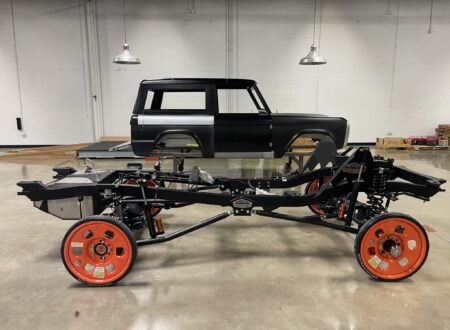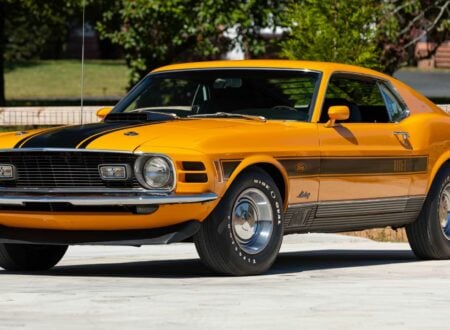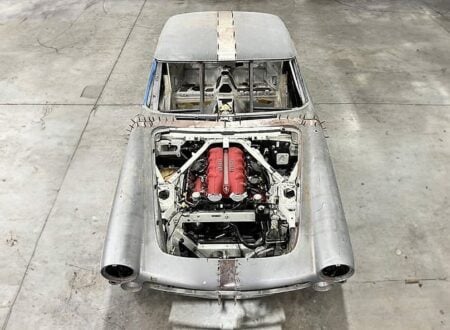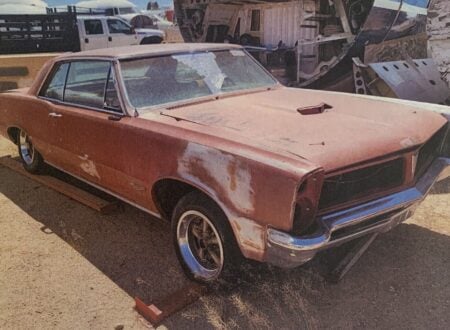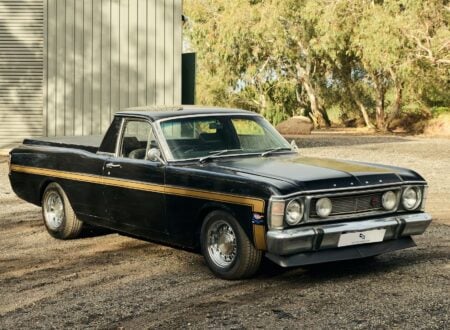This is a 1976 Porsche 914/6 that has been rebuilt into a roadster rather than the targa is started out as. The car is now a full convertible roadster with flared rear fenders and an enlarged 2.2 liter flat-six mounted amidships and driving the rear wheels through a 5-speed manual transmission.
The 914/6 has long been heralded as one of the better German sports cars of its time, and for many years they remained more on the affordable side of the vintage car spectrum and during this time they became a popular target for conversions – with larger engines fitted, wide body kits, and roadster roof conversions.
Fast Facts: A Porsche 914/6 Roadster
- The Porsche 914 was originally developed as a joint project between Porsche and Volkswagen. Due to complications, it ended up being sold solely as a Porsche in North America, with two variants: the 914/4 (four-cylinder) and 914/6 (six-cylinder).
- The 914/6 was produced for only three years (1969-1972) with 3,351 units made. It was more expensive than intended, selling for nearly as much as an entry-level 911. The 914/4, however, was very successful, with 118,000 units sold worldwide from 1969 to 1976.
- The Porsche 914 featured a mid-engine design, independent suspension, and disc brakes. It was known for its low center of gravity and good handling. Engine options ranged from 80-110+ bhp, with later models receiving more powerful engines.
- The article describes a custom 1976 Porsche 914/6 roadster. It features flared rear fenders, wider wheels, a folding soft top, and an upgraded 2.2-liter flat-six engine. This custom version is set to be auctioned by Mecum in Las Vegas.
The Porsche That Was Almost A Volkswagen
The Porsche 914 was developed by Porsche under contract with Volkswagen, the original plan had been that the two closely-linked companies would both sell the final car with their own badging – the Volkswagen 914 would be fitted with their own four-cylinder engine and the Porsche 914 would be fitted with a flat-six from the 911.
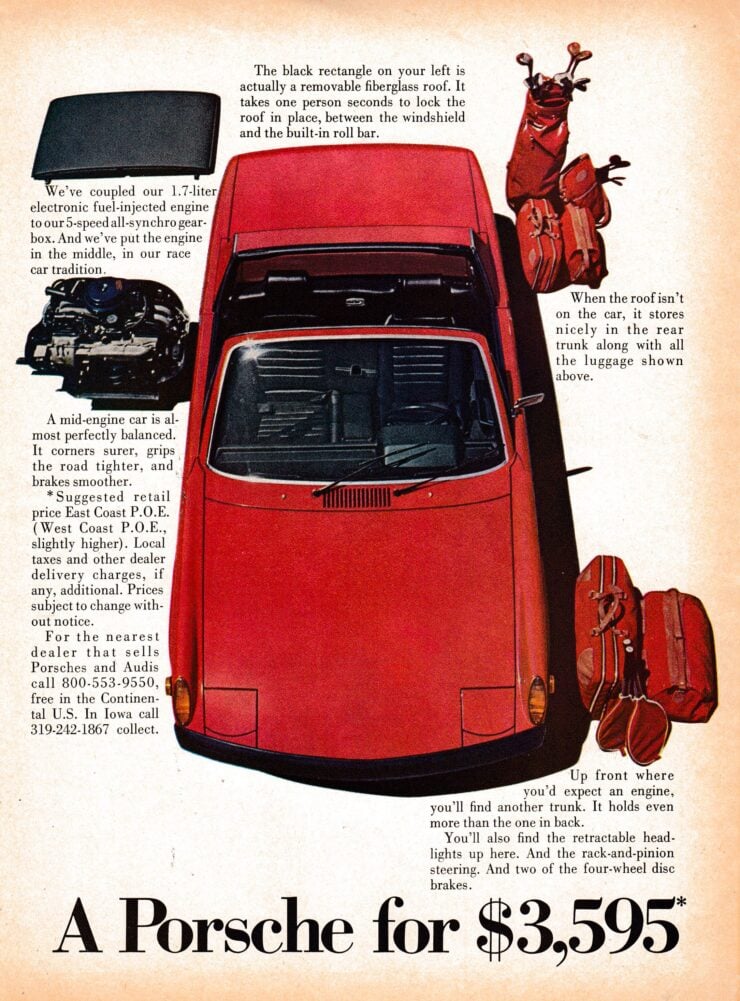

Although the plan started out with both German marques sharing the 914 platform, the agreement wouldn’t stay that way for long. Porsche executives were concerned that, particularly in the North American market, consumers seeing the same car being sold as both a Volkswagen and a Porsche might dilute their brand appeal. They were probably right about it too.
An agreement was struck with Volkswagen to allow the car to be sold in North America only as the Porsche 914, with the four-cylinder car marketed as the 914/4 and the six-cylinder car marketed as the 914/6. This verbal agreement had been made between Porsche and Volkswagen’s chairman Heinrich Nordhoff, sadly, Nordhoff would die shortly thereafter.
Nordhoff’s replacement would be Kurt Lotz, the verbal agreement with his predecessor didn’t hold up, and Lotz decreed that if Porsche wanted the rights to sell the model under their own name then they would have to share the tooling expenses – which were considerable.
This was more than a bump in the road for Porsche, as the 914 had been intended as the lower-cost sports car below the Porsche 911 in the model range to replace the outgoing Porsche 912. Production of the car went ahead, but the cost of the Porsche 914/6 version was so high that it was selling for only a little less than an entry-level 911, which largely defeated its purpose.
As a result of all this, the Porsche 914/6 would remain in production for only three years between 1969 and 1972, with 3,351 of them made in total. Today they’re considered quite collectible, though it’s important to get an original car, and not a 914/4 that had a flat-six installed later.
Despite tumultuous start to the Porsche 914’s life, it would end up becoming a successful model in 914/4 configuration. The price of these cars put them into a sweet spot in the market and they sold like hotcakes in the USA.
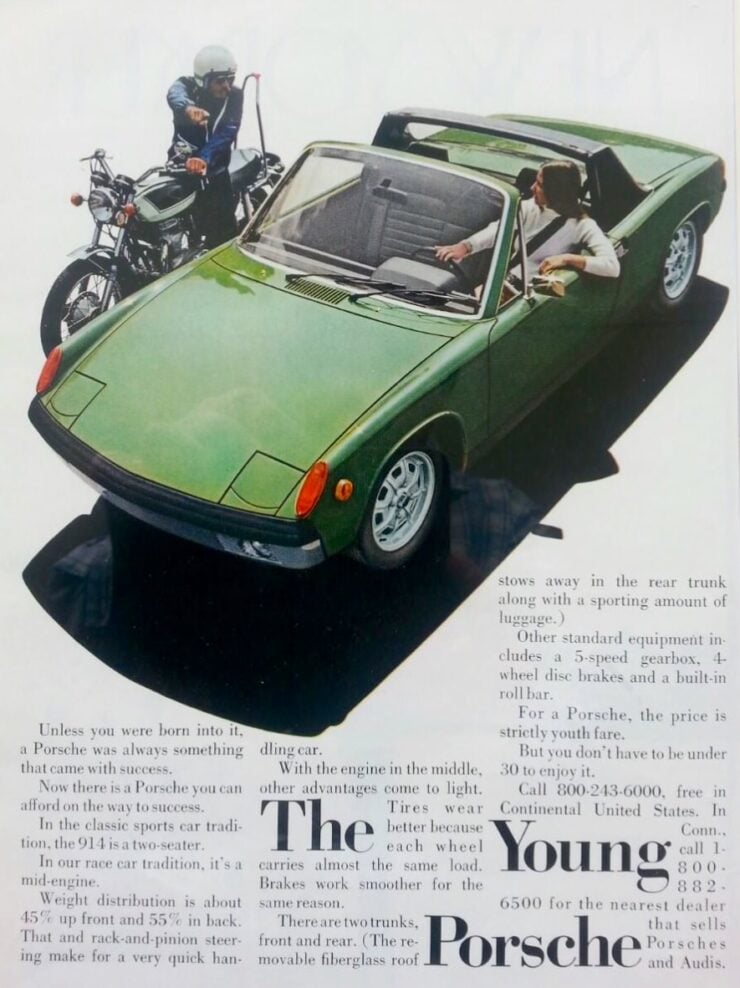

Over the course of the 1969 to 1976 production run there would be 118,000 units sold worldwide, vastly more than the Porsche 911, and the funds helped keep Porsche alive through the 1970s.
The Porsche 914: Specifications
Both versions of the Porsche 914 shared the same fundamental shell, a steel unibody design with an integrated targa-style roll bar and a removable fiberglass top.
The engine was installed in a mid-engined position, unlike the rear-engined Porsche 356 and Porsche 911, with the power sent back to a 5-speed manual transaxle, or an optional 4-speed semi-automatic “Sportomatic” transmission.
None of the production examples of the Porsche 914 were particularly powerful, the four-cylinder version started out with just 80 bhp and 100 lb ft of torque, with the flat-six turning out 110 bhp and 118 lb ft of torque.
Though this may not sound like much power, it was actually adequate given the low curb weight of the cars – from 940 kgs (2,072 lbs) to 985 kgs (2,172 lbs). Suspension was independent at all four corners, with MacPherson struts, lower A-arms, and longitudinal torsion bars up front and semi-trailing arms with coil springs in the rear.
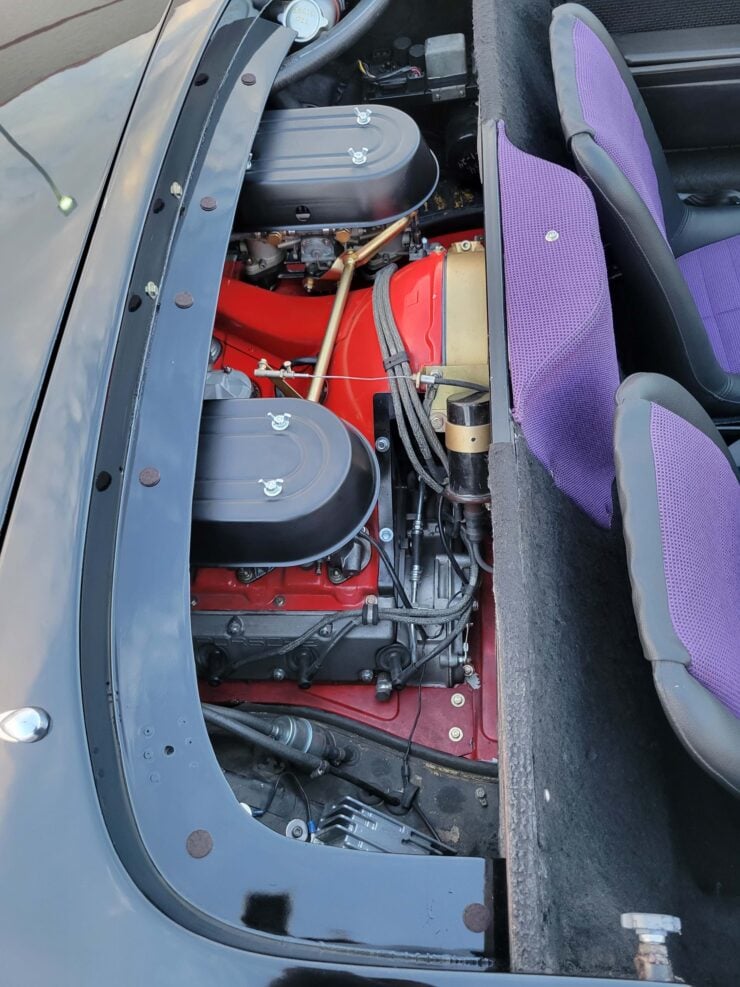

Disc brakes were fitted front and rear, and the car could be ordered in left or righthand drive depending on your location. There were no fixed roof or convertible versions of the 914 offered from the factory, though many have produced their own custom versions over the years.
The design of the Porsche 914 resulted in a very low center of gravity and a planted feel on the road, the aerodynamics were good for the class, and they quickly proved their worth in amateur racing competition on both sides of the Atlantic.
Later versions of the car would get more powerful flat-four engines, 84 bhp in the base model and 101 bhp in the higher end model. The Porsche 914/6 remains by far the most valuable, however many aftermarket tuners have now produced larger VW-based flat-four engines that are more powerful than the original detuned Porsche 911 flat-six that was originally fitted to the 914/6.
The 1976 Porsche 914/6 Custom Roadster Shown Here
The car you see here is one of the more interesting custom Porsche 914s we’ve seen in recent memory. It’s been fitted with flared fiberglass rear fenders and considerably wider rear wheels to better handle the output from the upgraded 2.2 Porsche flat-six engine.
The original targa roll bar and removable roof panel has been removed and replaced with a folding black soft top which tucks down behind the seats when not in use. The car is fitted with Fuchs wheels front and back, a period correct option, and the black interior features purple highlights.
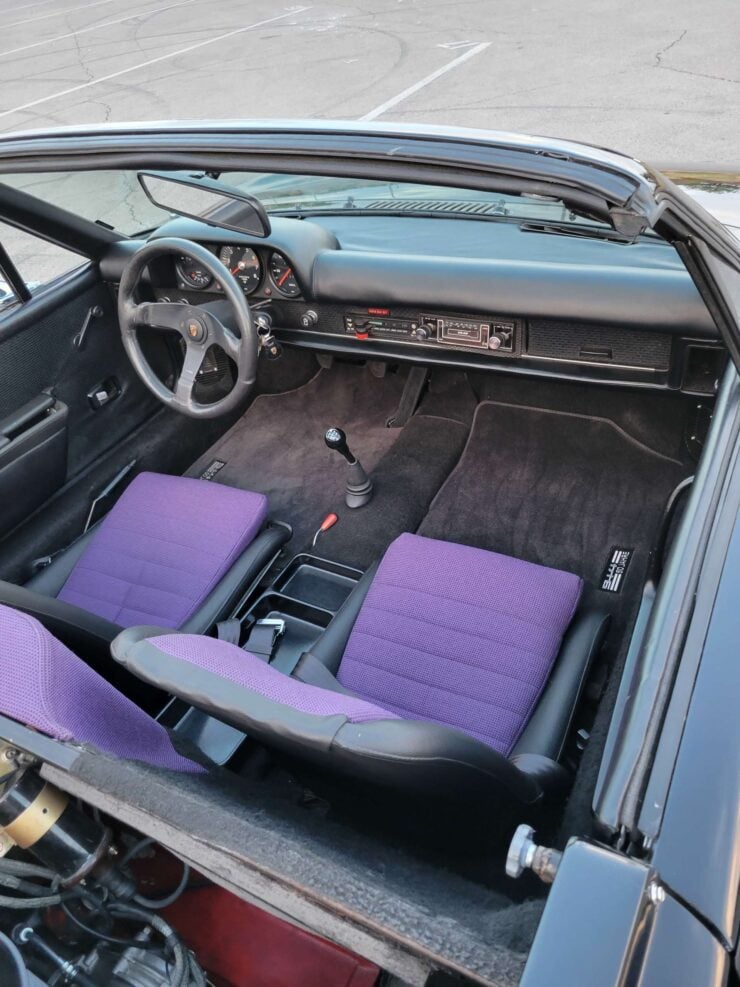

Power from the uprated engine is sent back through a 5-speed transaxle to the rear wheels, the engine is also fitted with an updated chain tensioner kit, and a Bluetooth timing adjustment unit. In the front trunk you’ll find a spare wheel and a modest amount of space for luggage, with additional luggage space in the rear.
The car is now due to roll across the auction block with Mecum on October the 19th in Las Vegas. If you’d like to read more about it or register to bid you can visit the listing here.
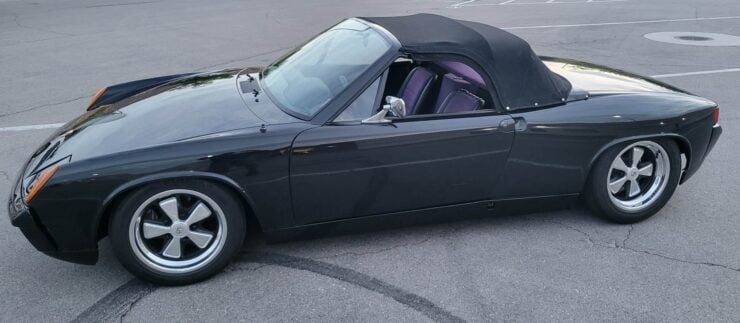
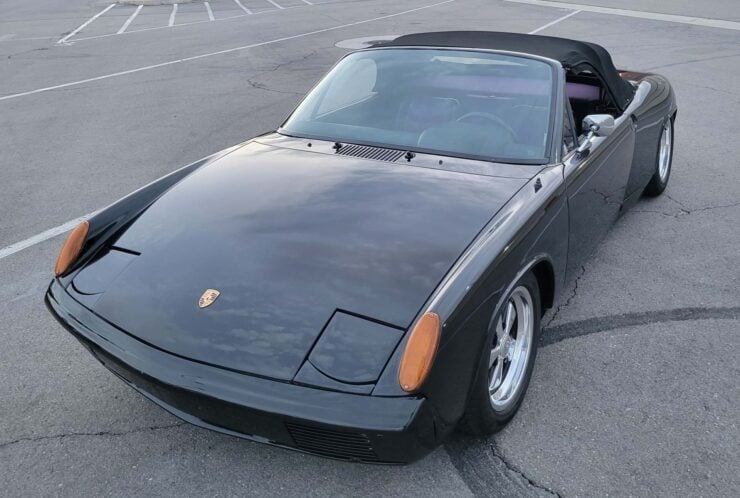
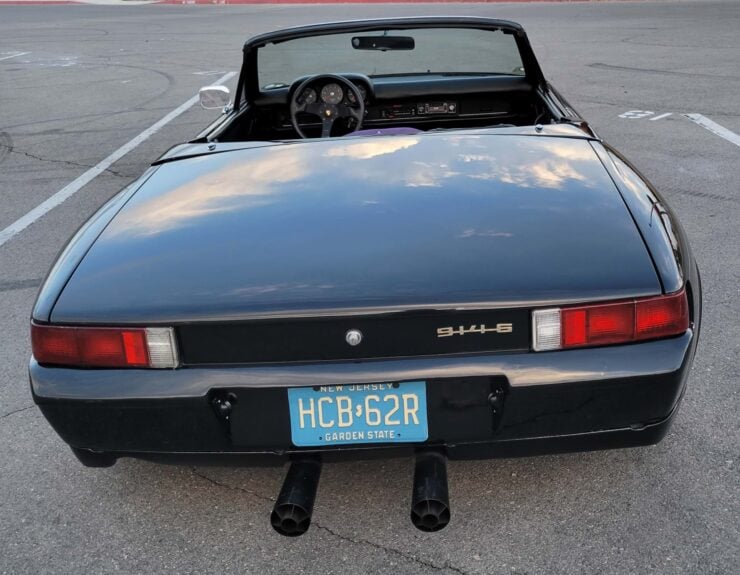
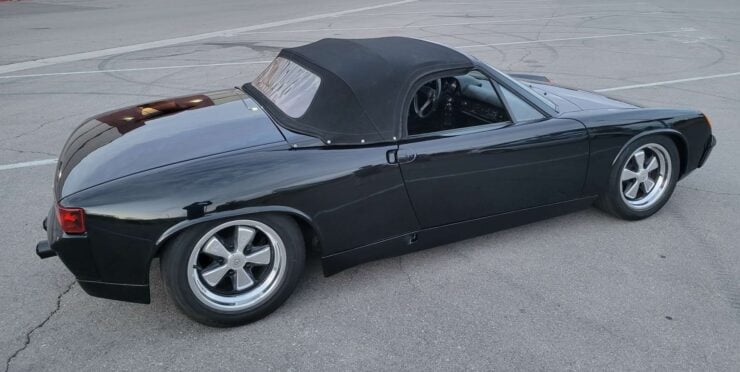
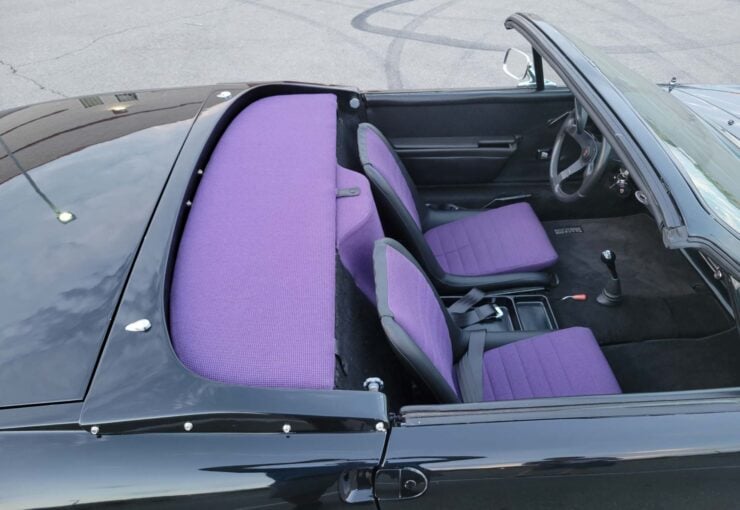
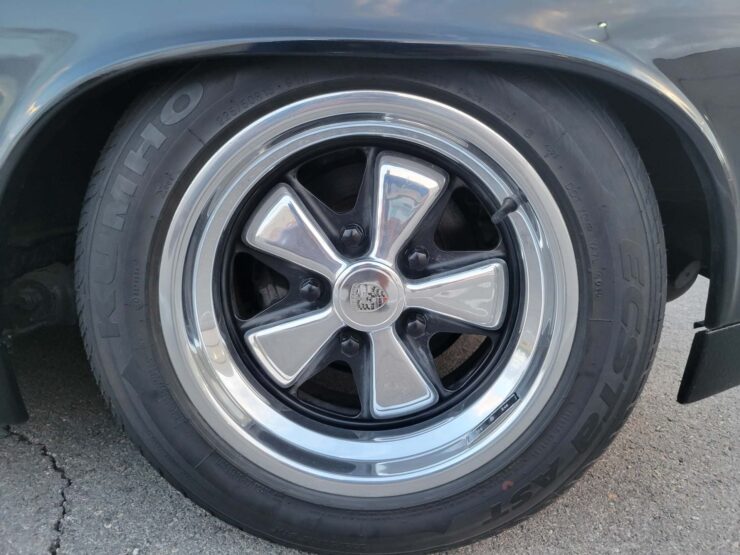
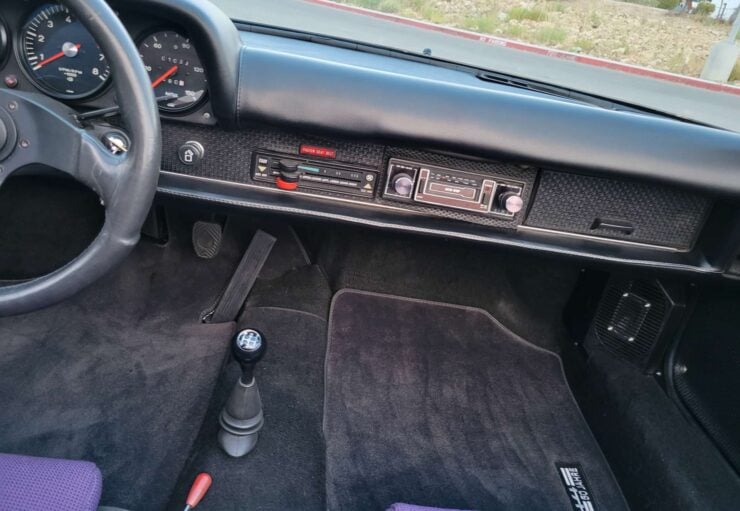
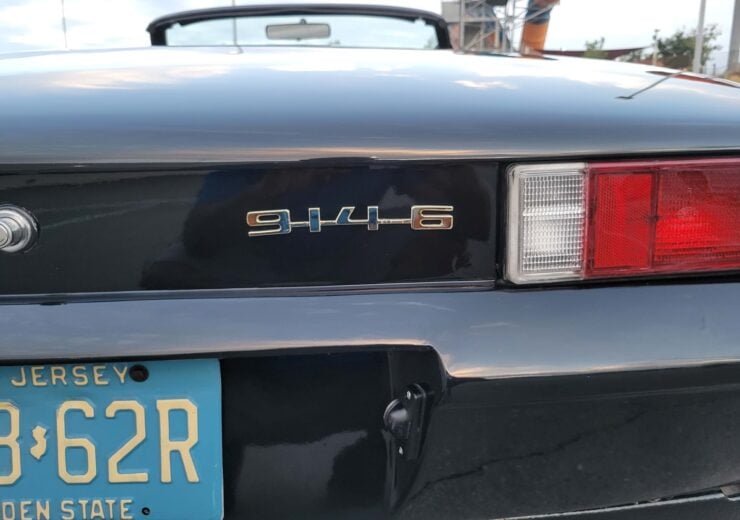
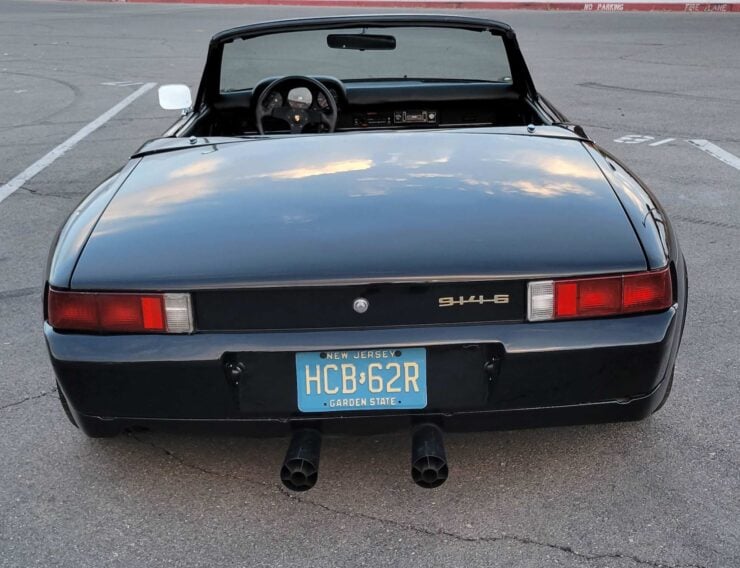
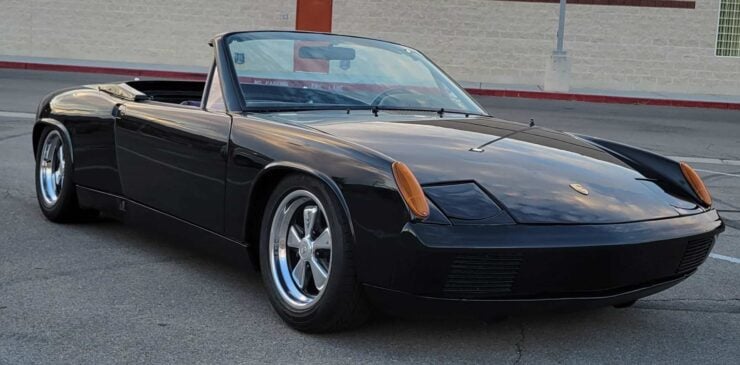
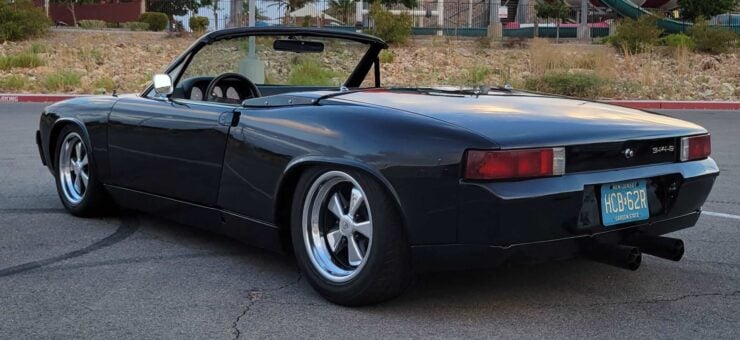
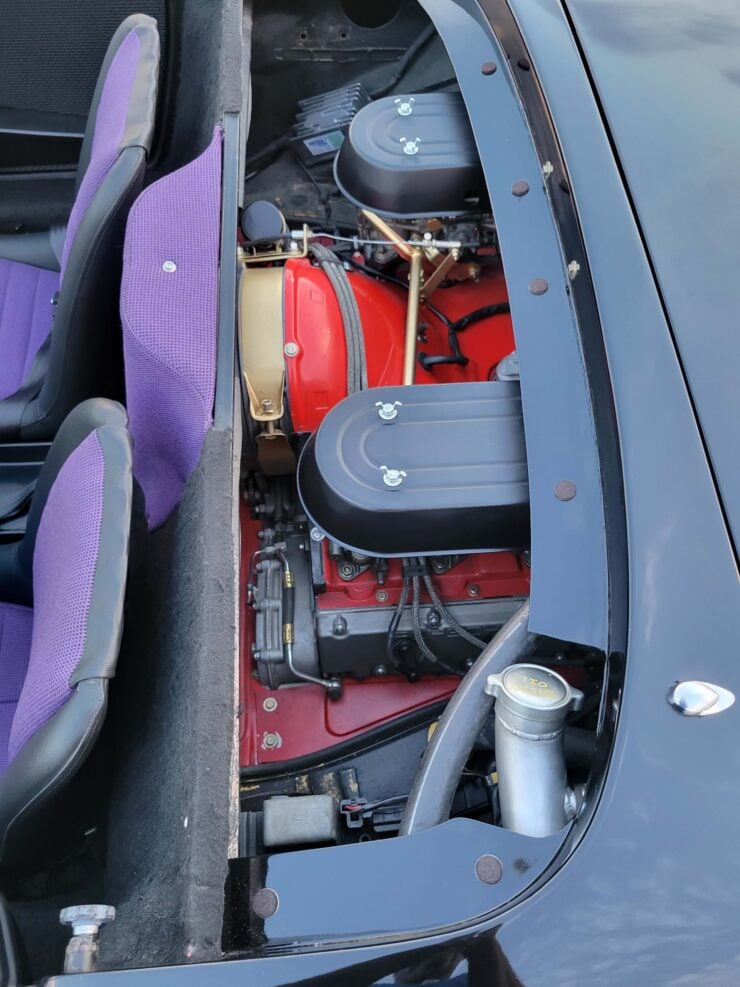
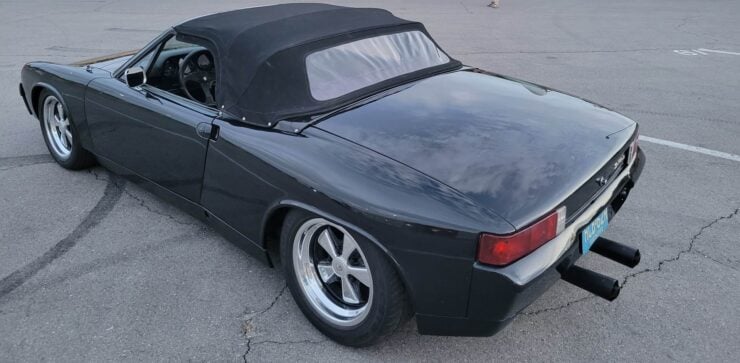
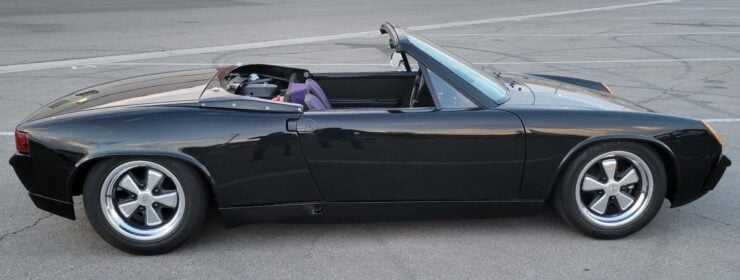
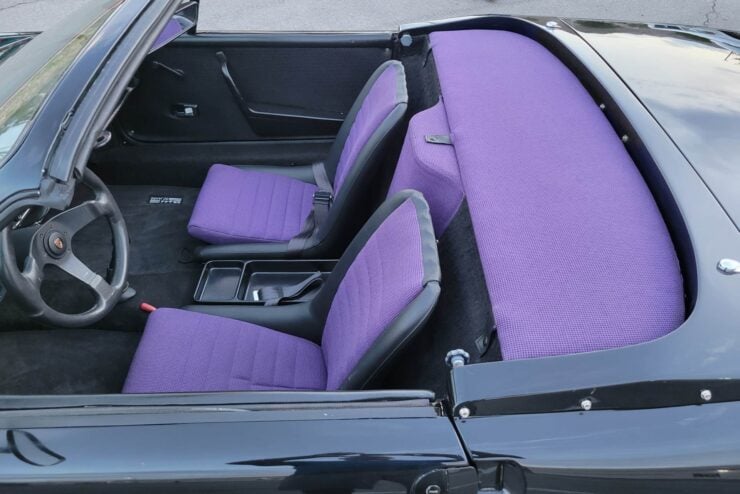
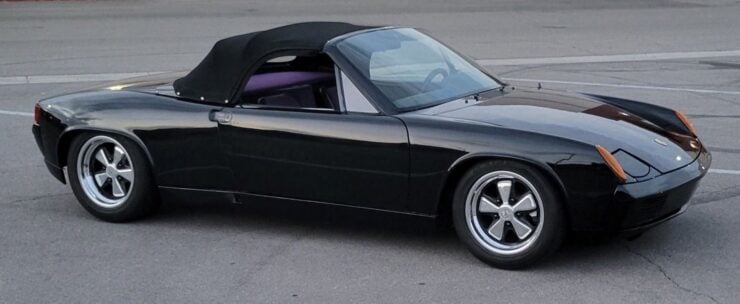
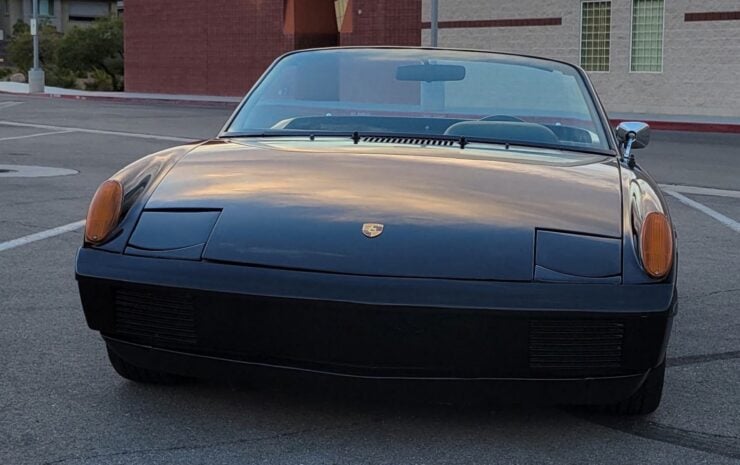
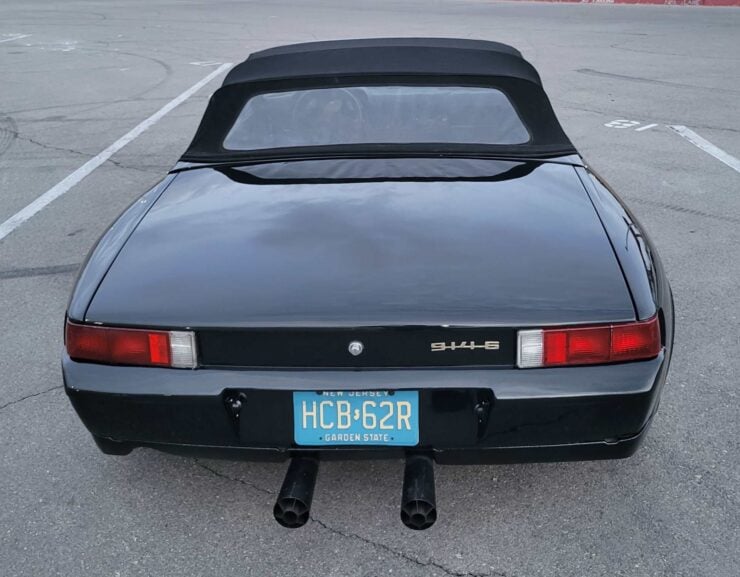
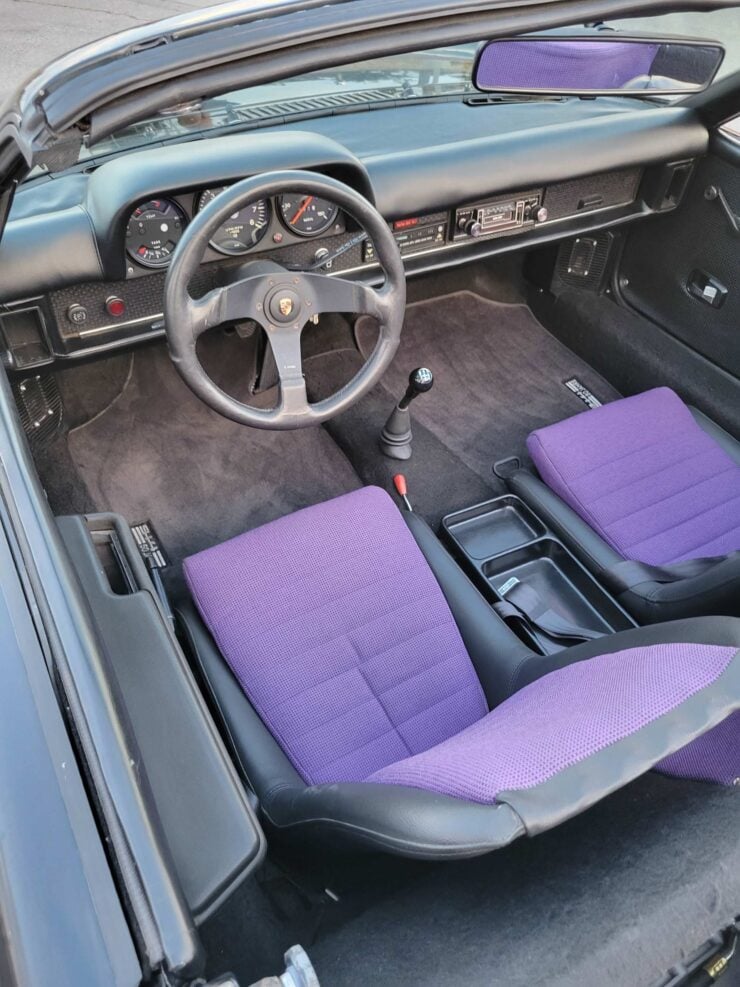
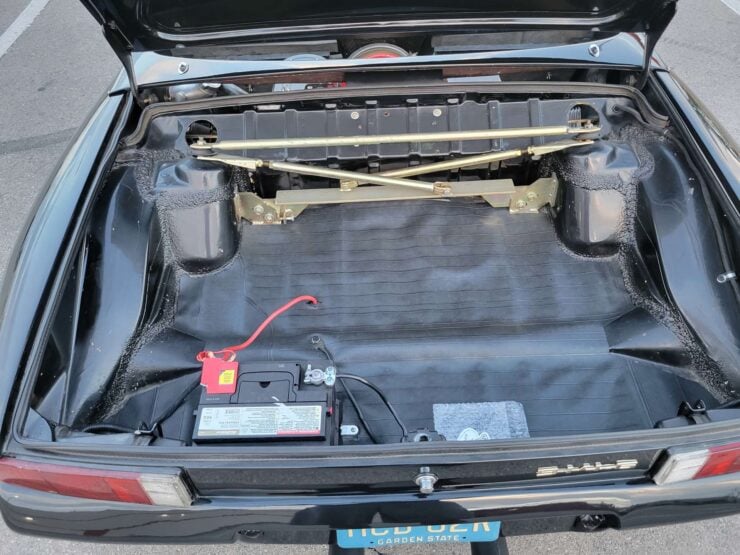
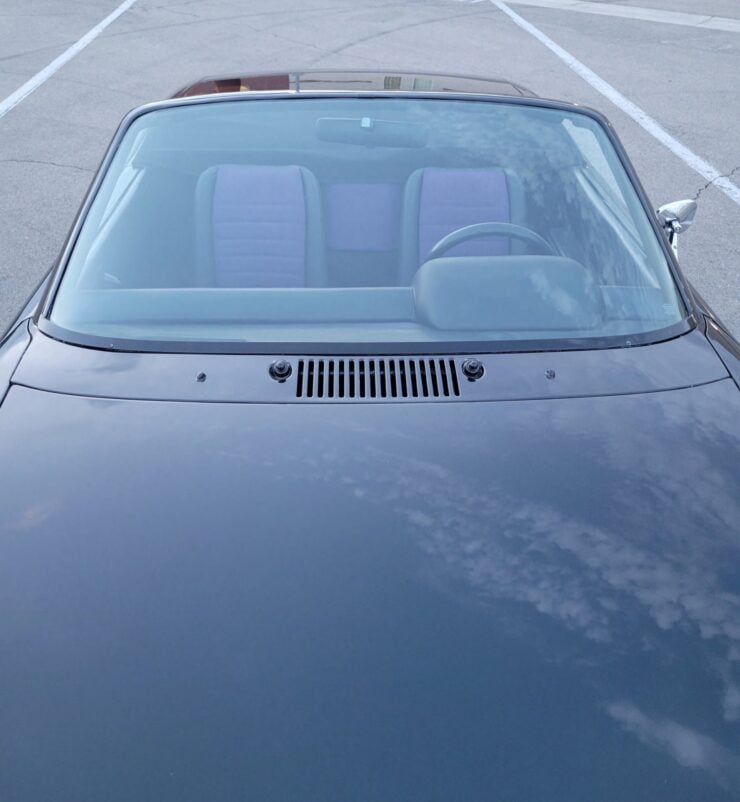
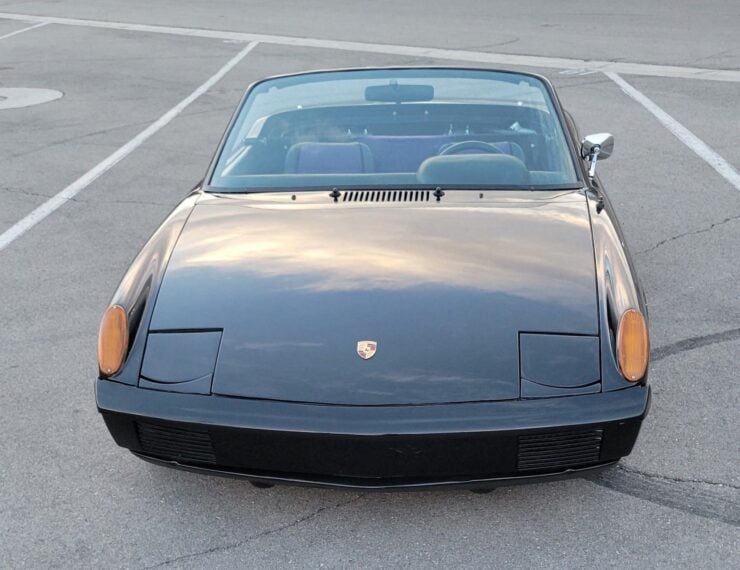
Images courtesy of Mecum




